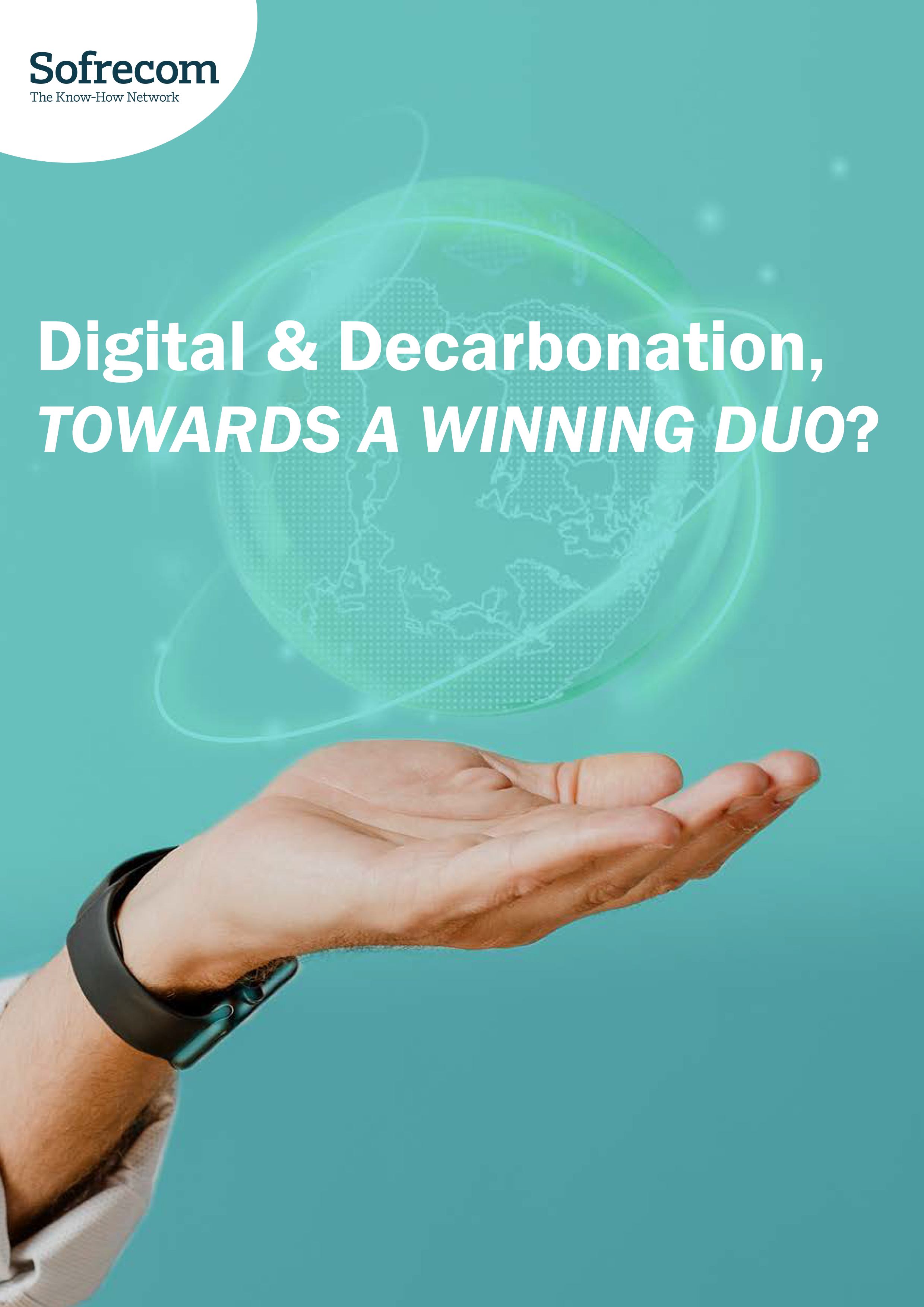
The digital sector emits between 3.8% and 4% of global GHG emissions1. With the foreseeable growth in usage, its impact will worsen. Each technological transition is an opportunity to improve energy efficiency and innovate to reduce the carbon impact from start to finish. Here's a look at some of the solutions already in place or under study.
Optimizing the energy efficiency of infrastructures
While 79% of the digital impact is related to terminals, data centers contribute more than 16% and networks about 5% (ADEME-ARCEP 2022 study). Several solutions exist to improve the efficiency of energy consumption and the way equipment is operated.
Eco-efficient data centers: the equipment, platforms, information systems and applications hosted by data centers are a major source of electricity consumption, as is air conditioning, which plays a key role in their operation. The eco-efficiency of a data center is measured by its PUE (Power Usage Effectiveness). Some emerging technologies, allowing natural cooling and air conditioning, significantly reduce this PUE: free cooling using fresh ambient air, liquid cooling by immersing equipment in water or adiabatic cooling using humidified air. Another possibility is to reuse the waste heat generated by the cooling of all the IT equipment to heat homes, but this requires the adaptation of existing heating networks. Finally, the deployment of 400-volt DC power supplies guarantees better efficiency than 220-volt AC or 48-volt DC power supplies. On the measurement side, there is a modeled solution for analyzing data center consumption based on AI, which can be used to manage resources and improve PUE.
Softwarization and virtualization: operators are increasingly relying on virtualized solutions in the public cloud and hosted in hyper-efficient data centers. This "as a service" approach avoids investing in physical machines that generate carbon emissions that they would have to account for. The public cloud is therefore an exciting solution for reducing the carbon footprint. Edge computing is another solution for the transformation towards a more digital and less physical world. This network of mini-data centers, storing and processing data as close as possible to the infrastructure, minimizes bandwidth requirements and reduces transmission costs. A better compromise exists between hosting frequently requested data as close to the user as possible and centralizing other data in a cloud.
Technical solutions marketed in an "as a service" (aaS) model: The possibility of putting the intelligent antennas of the 5G network into deep sleep mode is an innovative feature, as is “slicing”: the possibility of dividing the network into virtual slices offering different qualities of service depending on needs (reliability, bandwidth, latency). This management of shared networks consumed on demand, known as “Network as a Service” (NaaS), is based on Data AI technologies that capture and centralize the information needed to optimize consumption.
Sharing networks and platforms: In the spirit of Towercos, such as Totem, Orange's European subsidiary, sharing passive mobile infrastructures between several operators, such as FTTH fiber networks, is virtuous for the environment: it avoids the construction of new infrastructures while allowing operators to bring connectivity and services everywhere. This mutualization can go as far as sharing assets, such as power supply infrastructures (including green energy) and telecommunications equipment, such as RAN sharing in the field of mobile network access. Orange has signed agreements to this effect in Poland, Romania, Spain and Belgium. Overall, all the solutions for sharing passive/ active infrastructures, equipment, terminals and open collaborative platforms are beneficial to the environment because of their circular nature, allowing for more efficient use of assets and better control of life cycles by the manager.
The gradual phase-out of 2G and 3G technologies: each transition from one network generation to another brings a gain in energy efficiency. This issue has been integrated into 5G since its conception. Even if its deployment requires the activation of many frequencies, which makes it more energy-consuming in absolute terms than 4G, its better energy efficiency means that it consumes less per unit of throughput (bit/s). This efficiency will be limited at the start of the deployment due to the low filling of the activated capacities. But once the network is ramped up and signal processing is optimized, efficiency will be at its peak. Therefore, at the end of the deployment of a 5G SA network, it will be in the operator's interest to decommission its 2G and 3G networks to avoid a stacking of energy-intensive technologies. Orange, for example, has confirmed that it will phase out its 2G and 3G technologies in all the countries in which the Group operates in the European Union between 2025 and 2030.
Intelligent management of networks and consumption: Already, solutions such as IoT smart meters are helping to reduce energy bills and contribute to decarbonization ambitions. Thanks to Big Data Energy Services, it is possible to retrieve and analyze large volumes of data and traffic, to identify, for example, an overly generous power supply or to detect anomalies.
Producing electricity from renewable energy sources
In order to free itself from fossil fuels, the telecom sector is betting on solar energy with the construction of photovoltaic farms that can cover 20–70% of electricity needs, depending on the geography. However, in terms of life cycle analysis, the electricity produced from photovoltaic panels is not carbon neutral; this is because the manufacturing and management of the end-of-life of the panels are energy intensive. As for wind power, it proves effective only for powering mobile sites on buildings over 50 meters. Very few sites are therefore eligible.
Looking ahead, digital technology could have a role to play in the implementation of electricity storage solutions based on renewable energies, such as backup batteries for data centers. Such solutions do not yet exist for reasons of technological maturity and the profile of the French energy mix based on nuclear power, but flexible storage systems driven by digital technology are avenues to explore in order to move towards greater decarbonization.
Engaging in the circular economy
The digital sector is resource-intensive. The circular economy is the cornerstone of reducing its carbon emissions, particularly in Scope 3.
The eco-design of future networks is a major focus: Orange Innovation has put carbon efficiency at the heart of its eco-design approach for 6G.
Transforming linear business models into circular models involves: a responsible purchasing policy that challenges suppliers to integrate life cycle analysis of equipment from manufacturing to waste management; extending the life of equipment; working with the entire ecosystem to reduce the footprint...
In a forward-looking vision, blockchain could enable better management of the life cycle of each piece of equipment and identify solutions for infrastructure management and maintenance. These embryonic solutions are currently being put in place. Similarly, digital twins in the metaverse with tests in digital format could help reduce the carbon footprint in the long run.
1https://www.blogdumoderateur.com/numerique-emetgaz-effet-serre/
Davy LETAILLEUR, Head of IT & Network business Unit, Sofrecom
Alexandra KARTACHOVA, Head of Market Intelligence
Rémi SFEZ, Business Manager
Antoine DELOBEL, Senior Consultant






